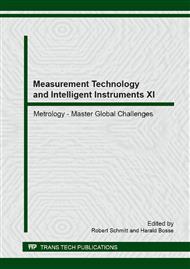p.239
p.244
p.251
p.259
p.269
p.279
p.288
p.296
p.307
Accumulative Drifting Model of Inertial Navigation Platform under Elliptic Vibration
Abstract:
To facilitate the calibration of a precision inertial navigation platform, the drifting of the platform under vibratory testing environment is analyzed, and a simplified drift model is developed which features the accumulative rather than instantaneous impact of the vibration on the platform drifting. When applied to error parameter calibration for the platform, the proposed model entails much less computing load in drifting prediction, and removes the requirement of strict real-time synchronization between the vibration generating device and the drift-predicting programs. The form of vibration can be assumed to be elliptic, a relatively general one which allows the shaker to vibrate sinuoidally in two directions perpendicular to each other and with phase difference of 90 degree. Under certain circumstances, the elliptic vibration can be simplified to a linear or circular one, as is typical in practice. Simulations of the platform drifting error under linear, circular and general elliptic vibration shows that the accumulative model can well serve as an alternative to the conventional one in such test environments, and the merits of the proposed model become more prominent when the frequency of vibration gets higher.
Info:
Periodical:
Pages:
269-278
Citation:
Online since:
May 2014
Authors:
Price:
Сopyright:
© 2014 Trans Tech Publications Ltd. All Rights Reserved
Share:
Citation:


